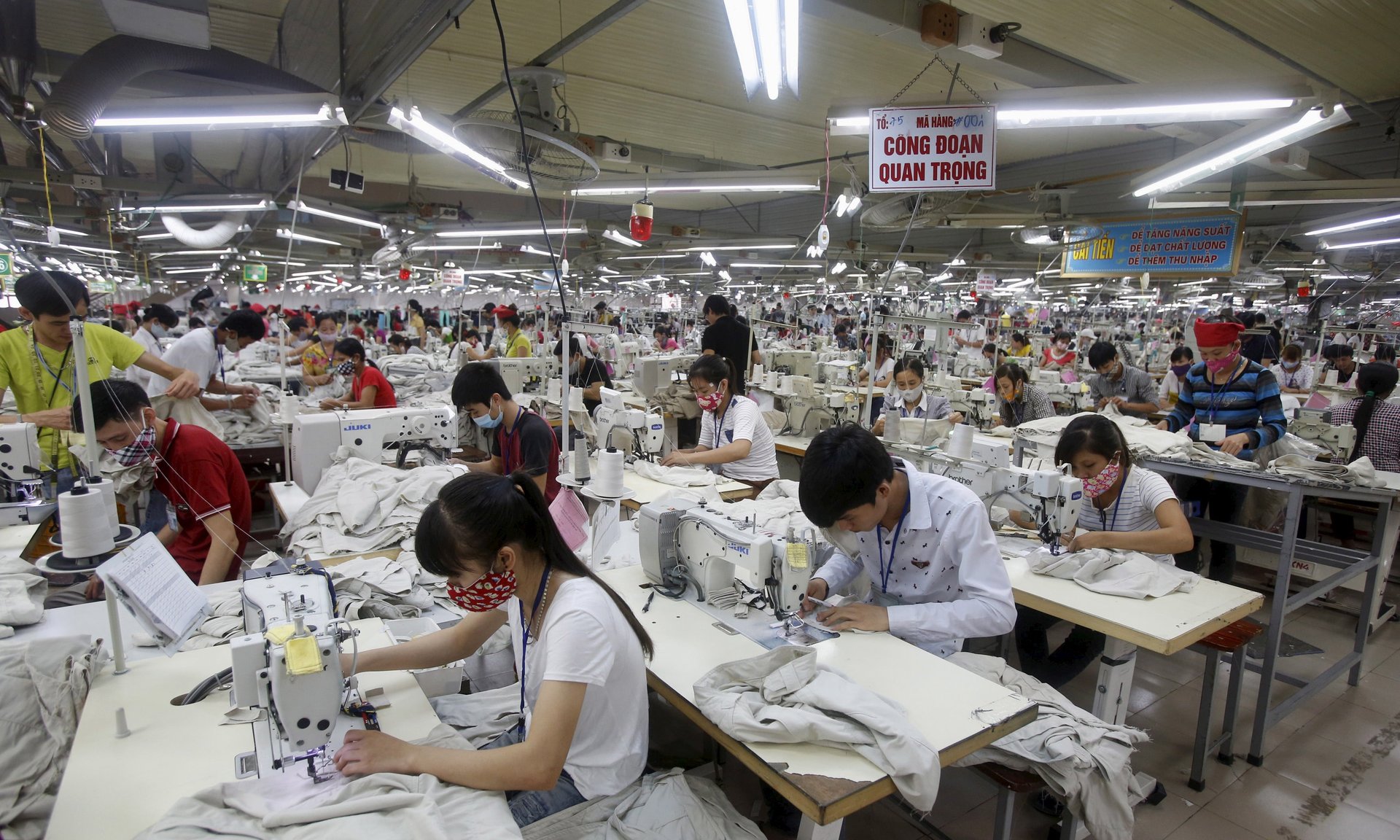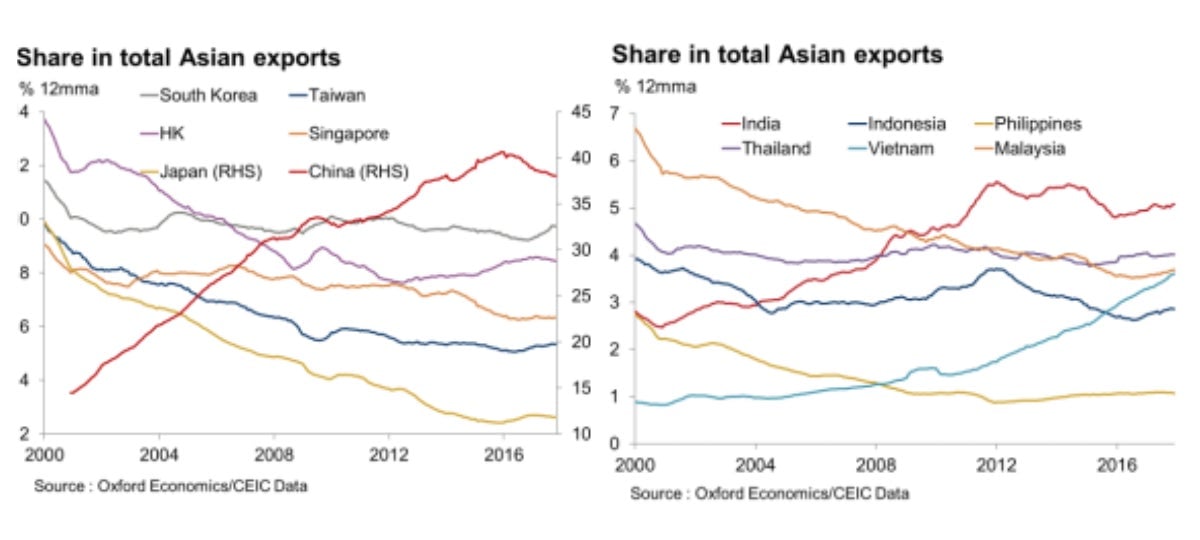China’s “unstoppable rise” in export power is being checked by the rest of Asia
Back in 2000, China made fewer than 15% of Asia’s total exports. But in the years that followed, the Middle Kingdom’s share surged—peaking above 40% in 2015.


Back in 2000, China made fewer than 15% of Asia’s total exports. But in the years that followed, the Middle Kingdom’s share surged—peaking above 40% in 2015.
It wasn’t exactly that China stole share from its Asian neighbors: Exports from the rest of Asia doubled during that time. China’s exports just grew a lot faster, rising by ninefold.
Now that imbalance appears to be shifting. Since 2015, other economies have been making gains on China and boosting their share of Asia’s exports, according to a note by Louis Kujis, economist at Oxford Economics.
A good chunk of that growth has come at China’s expense.

For example, rising wages in China have driven manufacturers relying on low-skilled labor to Vietnam and other developing economies in the region. At the other end of the value chain, global demand for labor-saving technologies like AI and robotics have helped buoy trade in advanced electronics and semiconductors from Japan, South Korea, and Taiwan.
Remarkably, this shift occurred in spite of the Chinese yuan’s relative weakness compared with most other Asian currencies, says Kujis. The yuan has strengthened considerably this year, which could bode ill for Chinese exports.
Then again, China hasn’t necessarily lost its competitive edge in manufacturing, Kujis notes. Instead, Chinese labor now adds much more value to its manufactured goods than it once did, allowing local producers to displace imports. So it stands to reason that if domestic demand stays aloft, Chinese manufacturing shouldn’t suffer from its neighbors’ export share-grabs. That, however, is a rather big if.